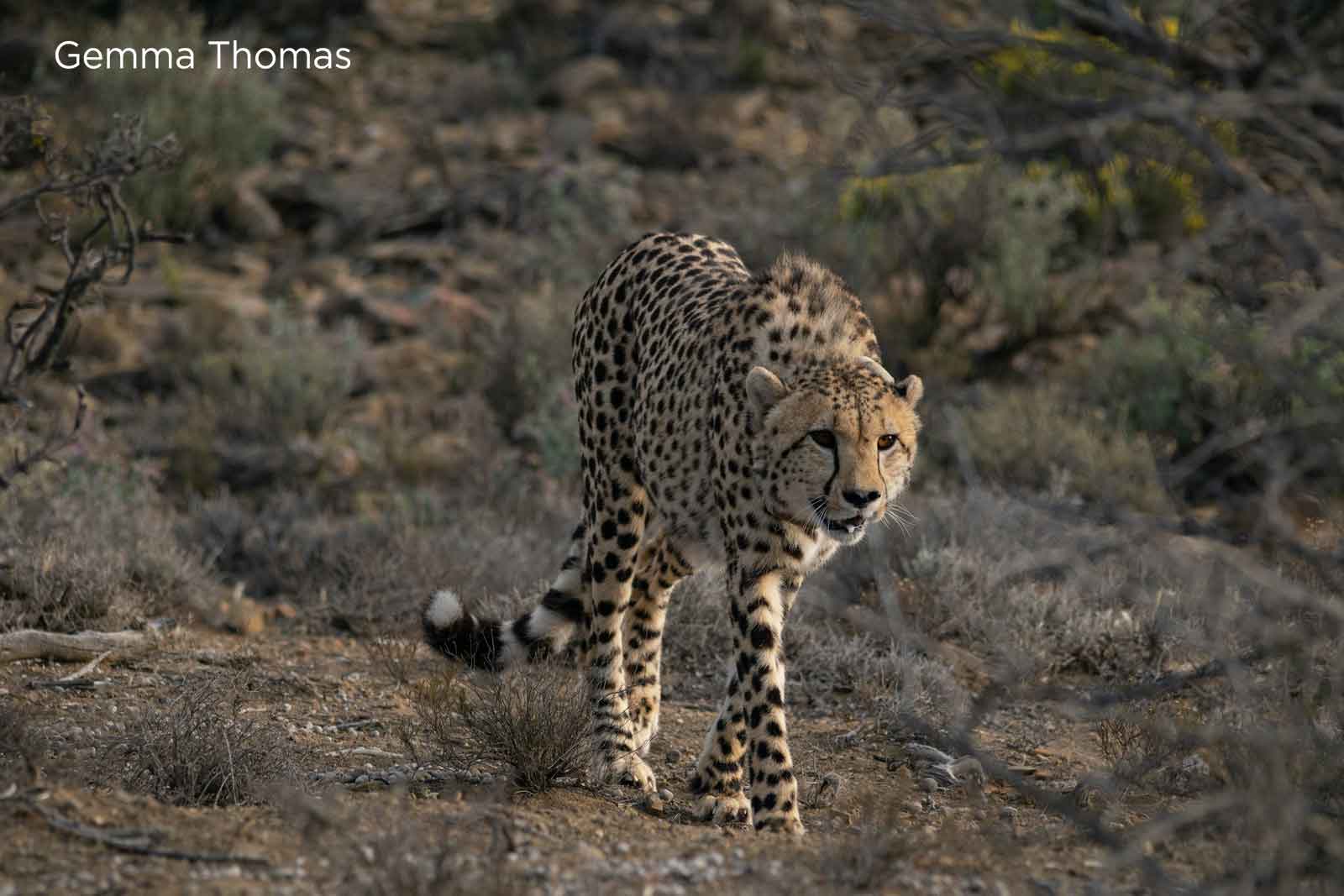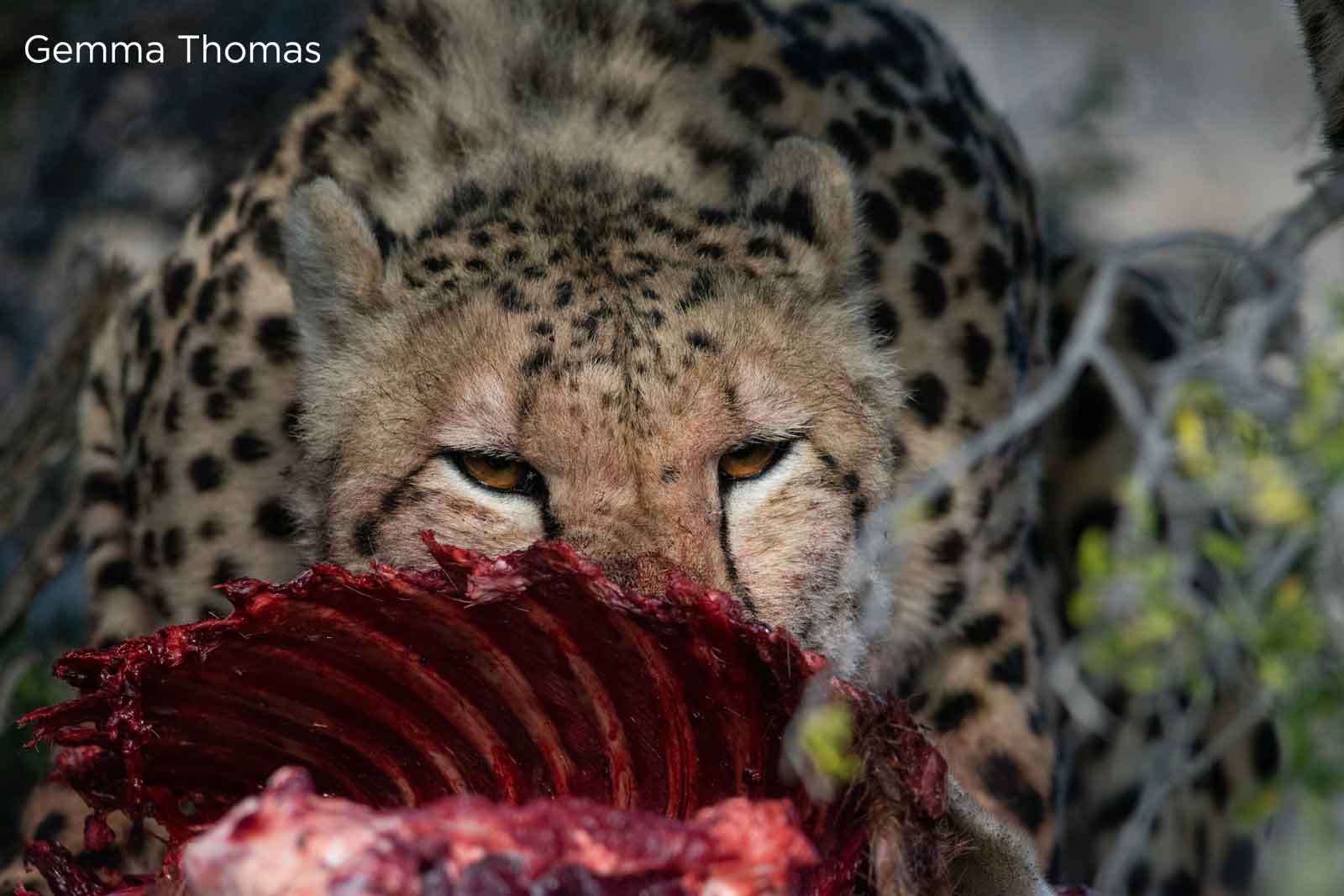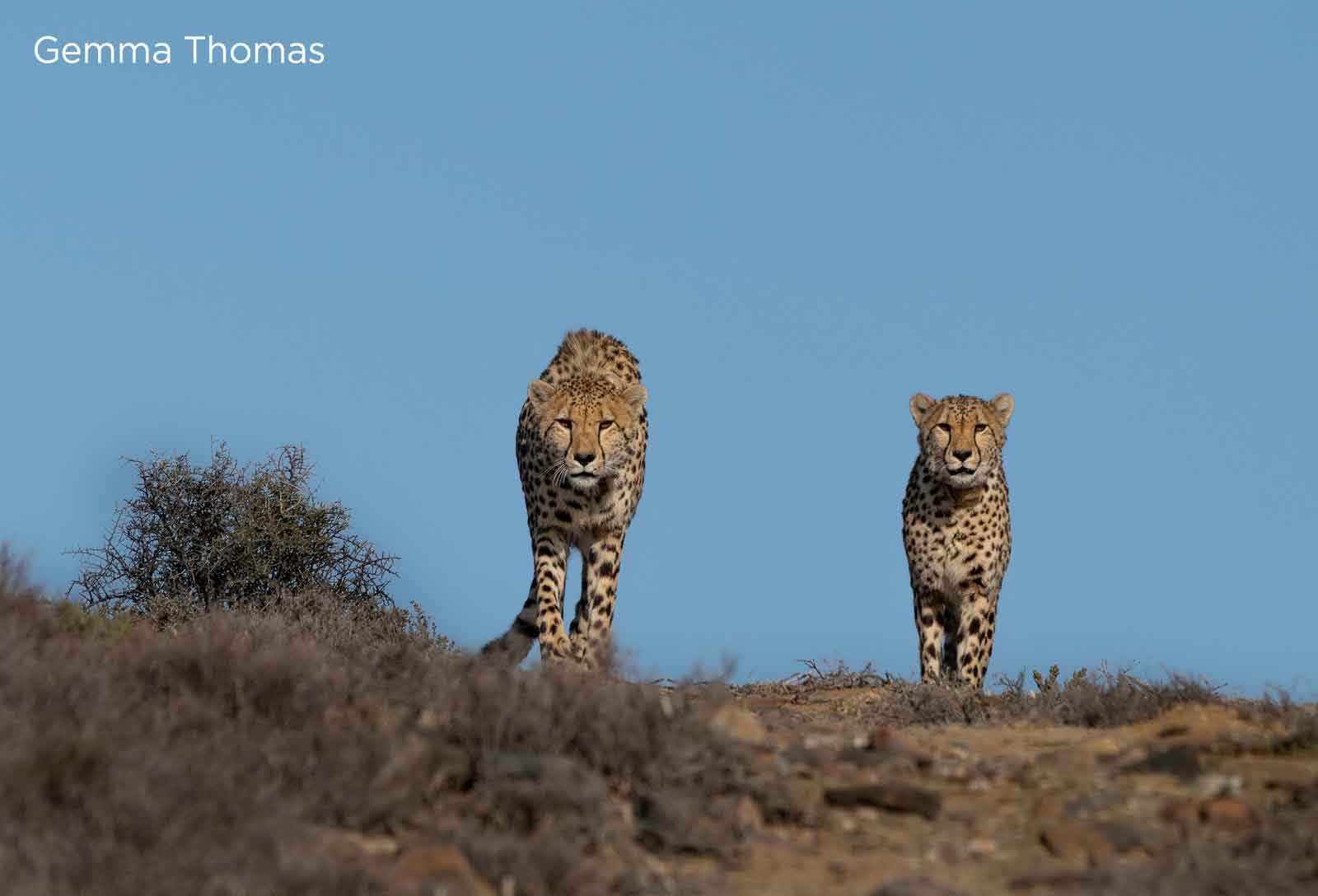The streamlined and sleek cheetah is one of the elusive cats to spot while on an African safari. According to their genus, they’re not actually part of the Panthera genus, and are technically NOT big cats. Interestingly enough, they are actually the last remaining species of the genus Acinonyx. An interesting fact given that we lump them together with other cats in the big cat family category.
The Panthera genus is a category assigned to big cats that emit a guttural and throaty roaring/barking sound. A cheetah doesn’t roar, it emits a high-pitched chirp and thus isn’t a Panthera.
However, they are still part of the Felidae family and still very much a cat! These delicate, elite cats are wonderful to watch when they’re at full speed. Found throughout southern Africa, cheetah have a wide distribution but do favour open savannahs with little obstacles. If you found the above information interesting, then we’re pretty sure you’ll find these further facts about our aerodynamic cats rather enlightening.
3 Interesting Facts About Cheetahs
They are diurnal hunters because they have poor night vision.
Cheetah have excellent vision and can see clarity on an object for up to 5 km. Coupled with their ability to assimilate detail on an object kilometres away, they also have a 210 degree peripheral vision. During the day a cheetah’s eyesight is equivalent to a powerfully expensive zoom lens! The black hairs absorb light from the sun and allow cheetahs to run straight towards the sun and still be able to see.
Unfortunately this precision eyesight doesn’t fare well during the nocturnal hours. Cheetah hunt at dawn and dusk, when it’s still light outside and the air cool enough to hunt. Big cats generally prowl under the cover of darkness, which means cheetah have naturally eliminated the competition for prey by hunting outside of predator rush hour.
Speed is their secret weapon, not strength.
Cheetah are the fastest terrestrial animals and can easily reach speeds of up to 120 km per hour. Their twisty elongated tail acts like a rudder and helps them balance when reaching top speeds. The cheetah’s body is so finely tuned for speed, that it lacks other skills to protect itself in the wild. These cats don’t have much strength and cannot afford to fight off any form of predatory competition. This is why, when they take down prey, they will eat quickly and with finesse. They cannot afford to come face-to-face with bone crushing scavengers. Their kill tactics are swift and little blood is shed.
Cheetah are solitary animals, but males and females are seen together when its time to mate.
Cheetah are solitary animals that generally live alone, or in coalitions. Males and females come together to mate and females will raise their young alone. Females often give birth to 2 – 5 cubs in a litter. Cubs are completely blind and helpless when born, and females will need to stash the cubs in a den site for safety. She will move the litter every few days or so, and at 6 weeks the young spotted bundles of fluff will join her on hunts.
If you are interested in learning more about cheetahs, then we recommend a cheetah conservation safari at the luxurious Roam Safari Lodge in the Cape’s Great Karoo region. This is where Gemma Thomas spent time photographing these slender cats.





